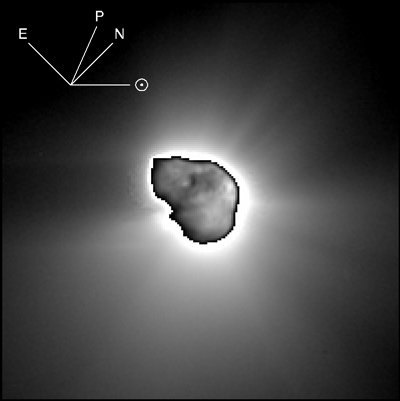Coma & Nucleus

Although from a distance the coma of a comet looks bright and dominates the view (see Images from Cruise Phase), at close range, it is very faint. It is much like trying to see a tree surrounded by fog. From far away, all you see is the fog, but if you get close enough, you see the tree and the fog becomes harder to see. This image is a composite of two exposures - a long one (coma frame 9000852) where the nucleus was overexposed (showing the coma) and a shorter exposure of the nucleus (nucleus frame 9000848) that underexposed the coma. In addition, the coma is grey-scaled logarithmically to show structure while the nucleus is inset with linear contrast levels, scaled so that it is not saturated.
The spacecraft range was 1.4x104 km, and the field of view is about 28 km across. Celestial North (N) and East (E), used to describe directions in the coma, are shown in the upper left, as are the projected positive spin axis (P), which extends 23° into the sky plane and sunward direction, which extends 30° out of the sky plane.
CREDIT: NASA/UM/Tony Farnham











